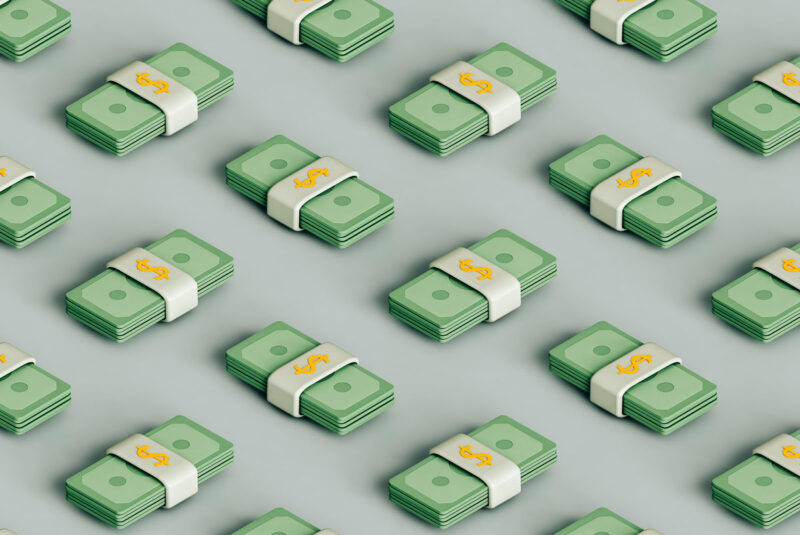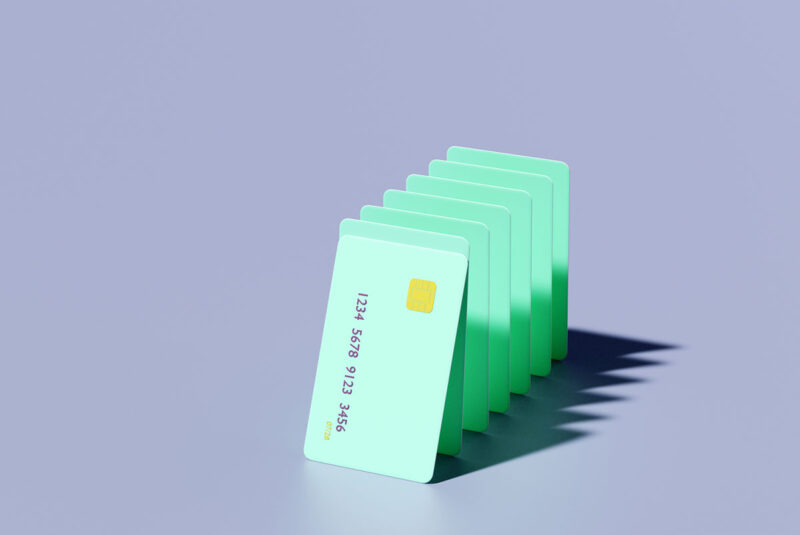There is no exact credit score you need to get approved for a credit card. If I had to pick a number, I’d say you may run into trouble getting a credit card if you have a FICO score or VantageScore below about 580, but it’s more complicated than that.
If you’re asking this question, there are some important things to understand first:
- lending decisions are not based solely on one of your credit scores
- you don’t just have one credit score
- it depends on the card you’re applying for — different credit cards have different requirements for approval
Keep reading to learn more about each of these and to see what kinds of cards you may qualify for with your credit history.
When you visit MoneyTips, we want you to know that you can trust what’s in front of you. We are an authoritative source of accurate and relevant financial guidance. When MoneyTips content contains a link to partner or sponsor affiliated content, we’ll clearly indicate where that happens. Any opinions, analyses, reviews or recommendations expressed in our content are of the author alone, and have not been reviewed, approved or otherwise endorsed by the advertiser.
We make every effort to provide up-to-date information; however, we do not guarantee the accuracy of the information presented. Consumers should verify terms and conditions with the institution providing the products. Some articles may contain sponsored content, content about affiliated entities or content about clients in the network. While reasonable efforts are made to maintain accurate information, the information is presented without warranty.
Credit Decisions Are Based on More Than a Credit Score
There’s no magic “credit card score” where you’ll be approved for all credit cards if you’re above it and denied for all cards if you’re below it. A lender is going to consider several key factors when you apply for credit. These may include:
- One of your credit scores: The lender may use a credit score to screen out people with a bad credit rating, for example, but it’s not the only factor in the decision. Did you know you have more than one credit score? The next section talks more about that.
- Your credit history (credit reports): While a credit score might be considered, lenders will look at one or more of your credit reports to make sure you have a history of on-time payments. Depending on the card you’re applying for, the issuing bank may want to see several years of on-time payments. Looking at a credit report gives the lender a more detailed picture of your financial history than a single credit score number can.
- Your income: This isn’t on credit reports, but credit applications always ask how much you make each year. The credit card issuer wants to make sure you have steady income before extending you a line of credit. Sometimes, the bank will ask for additional documents, like tax returns, to support the annual income you write on the application. Your income can be a big factor in the credit line you’re granted by the issuer.
- Your monthly housing cost: Credit card applications often ask about your housing situation: whether you rent or own, and what your monthly payment is. If your monthly housing expense seems high relative to your income, that may keep a bank from approving you for new credit or factor into the terms.
Remember, the difference between a credit report and a credit score is important. Here’s one example: Most credit scoring models only consider hard inquiries from the past year. However, hard credit checks from the past two years are included on your credit reports. Some lenders have rules for denial based on the number of new accounts you’ve opened in the past two years. So, even if you have credit inquiries that are over a year old and not being counted in your credit scores, a lender might still deny you based on how many inquiries you have.
Even if your credit scores look great, a single late payment or lots of inquiries on your credit reports could be a reason you’re denied. Remember, a late payment can stay on your credit reports for seven years, so it’s important to pay all your bills on time every month.
Or, maybe you have great payment history, but not much income. In that case, you may be approved for a card, but granted a low credit limit.
You Don’t Have Just One Credit Score
You may have heard people talk about how important “your credit score” is. But really, they’re talking about “your credit scores.”
When you see “your credit score” somewhere, like on your credit card statement, it’s really “one of your credit scores.”
There are many different credit scoring models out there, with several that are the most popular and most commonly used. The most popular credit scoring models are created by Fair Isaac Corporation and are known as FICO scores.
Another popular brand of credit score is VantageScore. These scoring models were developed by the three major credit bureaus in the United States: Equifax, Experian, and TransUnion.
The score ranges can vary from one credit scoring model to another, but many of the more popular ones have adopted a range of 300–850, where higher is better. This is the credit score range we assume for the rest of the page. With these models, a “good credit score” is roughly anything above 670, although this is subjective.
When you’re looking at a credit score, there are two important things to consider:
- What credit scoring model is being used to calculate it
- Which of your three credit reports is being used as the data source to calculate the score (they may have different credit information depending on how your accounts report)
Credit Karma, for example, provides you with two VantageScore 3.0 scores: One is based on your TransUnion credit report, and the other on data from Equifax.
Credit Requirements Vary
Different credit cards have different credit requirements. You may be approved for one card, but denied for another.
Generally, the lower your credit card debt and longer your history of on-time payments with other accounts, the more likely it is you’ll be approved for credit cards with the lowest interest rates, highest credit limits, and best rewards.
Retail store credit cards can be relatively easy to get, even with bad credit, but have their downsides. Higher end credit cards, like the best travel credit cards, can provide the most benefits and rewards, but require excellent credit history.
The only way to really know if you will get approved for a credit card is to apply. If you are denied, you will get a letter within 7–10 days that tells you why. Many issuers also provide a way to check whether you’re pre-qualified for any of their cards.
As long as you build credit responsibly, you will maximize your chances of getting approved for a wider variety of cards.
What cards can I get?
This table breaks down the types of cards you might be able to get depending on your FICO scores, but keep in mind your income and the specific credit history on your credit reports can play a big role. Remember, the only way to know for sure whether you’ll be approved for a card is to apply.
| FICO Score | Credit Level | Approval Odds | Types of Cards |
| Above 800 | Excellent | Great | Almost any card from major issuers. Cards with the best rewards programs and benefits. |
| 740-799 | Very Good | Great | Almost any card from major issuers. Cards with the best rewards programs and benefits. |
| 670-739 | Good | OK | Decent cards from major issuers, but not the highest-end cards. Cards that earn some rewards |
| 580-669 | Fair | Below average | Cards designed for people with less-than-good credit, usually with no rewards. Retail store cards. |
| Below 580 | Bad | Low | Secured cards. Unsecured cards designed for people with bad credit, which tend to have bad terms and worse customer service. |
Excellent Credit
In this category, you have high credit scores in all major credit scoring models. You have at least 5–10 years of credit history on your credit reports. You may also have a good “credit mix,” or combination of credit cards and installment loans, like car loans, that indicate your ability to manage different types of debt responsibly.
Your goal is probably to get a card or cards that best fits your spending habits and lifestyle to give you the best reward and benefits, while providing you with enough value to cover any annual fees.
Credit card companies may present you with special introductory offers, like bigger point bonuses if you spend a certain amount on a card soon after opening it.
At this level, you’ll likely have your pick of premium cards.
Very Good Credit
This category is basically the same as the excellent credit category. There may be some rare situations where this difference could make an actual difference, but it’s unlikely.
Good Credit
In this category, it’s likely your FICO and VantageScores are around the 670–739 range, or maybe a little lower. You probably have at least 2–3 years of credit history established on your credit reports with no late payments.
At this level, you may be able to qualify for many cards from different banks, but your income and other factors may play a bigger role in the issuer’s approval decision. If credit scoring models give you scores near this range, banks may take a closer look at how much debt you have on existing credit accounts and other details about your relationship as an existing customer of the bank.
You’ll likely be able to get cards with decent rewards at this level, and as long as you use your cards responsibly you’ll build up more positive credit history over time until you have excellent credit.
Fair or Average Credit
In this category, you’re probably in your first year or two of the credit-building process, or you’re recovering from a few negative items, like missed payments. It’s possible you have very high credit card balances relative to your available credit, a ratio known as credit utilization, which can be a negative signal to credit card issuers.
If you’re at this level, your goal in getting a card is probably to build credit so you can qualify for better cards and terms in the future.
At this level, your options are a little more limited. You’ll want to be smart by not applying for too many cards that are designed for better credit levels since you’ll get a hard inquiry every time you apply for a card. Too many hard inquiries could make it harder to get approved for cards in the next 1–2 years, and they’ll also generally decrease your credit scores.
Depending on your exact credit history, you may have mixed results when applying for cards at this credit level.
If you’re closer to the bad credit end of the credit spectrum, you may not get approved for a regular unsecured credit card, and you may want to consider applying for a secured card, which requires a deposit in case you don’t pay your bill. If you can’t get approved for unsecured cards designed for fair or average credit, cards like the Discover it® Secured and the Capital One Platinum Secured Credit Card may make sense as a place to start building credit, then you could graduate to an unsecured card later.
Retail store cards tend to have worse terms that cards issued by big banks or credit unions, but sometimes they have lower approval requirements, so a store credit card may be another option for you to start building credit if you can’t get approved for other cards. Just make sure you’re paying your bills on time and in full every month.
Bad Credit
You may be in this category if you have some significant negative information on your credit reports, like collection accounts, bankruptcies, or lots of recent late payments.
A poor credit profile can affect you in many ways, so your goal at this level is probably to re-build your credit so you can qualify for better cards and better loan terms in the future.
At this level, banks may see you as a credit risk, or someone who might not pay off debt. You’ll likely need to start with a secured credit card or other credit card for people with bad credit. Secured cards require that you pay a security deposit, which the bank holds on to in case you don’t pay your bill. Even though there’s a deposit, you can still get denied for secured credit cards.
There are also several unsecured credit card offers designed for people with bad credit, but read the reviews before you apply — some of these cards have bad customer service and bad terms.
No Credit
If you don’t have any credit established, you may be able to qualify for cards in the fair credit category above. If you’re a student, a credit card designed for students could be a good place to start.
Frequently Asked Questions
No, there are no credit scores that guarantee approval. Credit card issuers consider more than just credit scores when making a decision. Other information, such as income, monthly rent or mortgage payment, and your credit history are all considered. Having higher scores obviously helps, but there is never a 100% guaranteed approval.
The two most popular credit score brands are FICO and VantageScore. However, there are many others aside from those two. Different scores may be used depending on what you’re asking to borrow. Auto loan lenders, personal loan lenders, and credit card issuers could all use different credit scores.
Within the FICO and VantageScore brands are many different models. FICO alone produces FICO Bankcard Score, FICO Score 8, FICO Score 1, FICO Auto Score, and FICO Mortgage Score, to name a few, and VantageScore is similar in that way. FICO Score 8 and VantageScore 3.0 are the most popular scoring models used by lenders.
Credit scores are a way for credit lenders to determine your risk level as a borrower. They are calculated based on your history with loans, credit cards, and other financial products. Typically, your credit scores are generated from your credit reports with the three major credit bureaus: Equifax, TransUnion, and Experian.
Yes, there are credit cards for bad credit. Some of them are better than others, offering rewards and a few perks. They can help reestablish your credit through responsible use. Once your credit is looking better, you can move on to stronger reward cards.
Here are a few good choices:
- Discover it® Secured
- Petal® 1 No Annual Fee Visa® Card
- Bank of America® Customized Cash Rewards Secured Card



